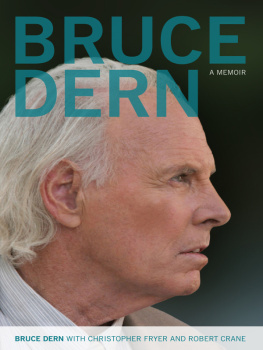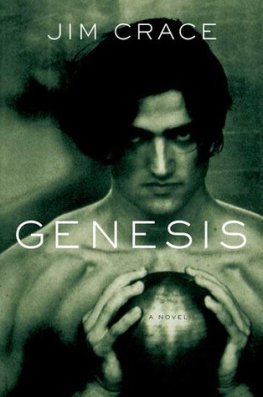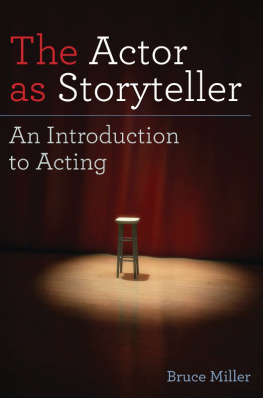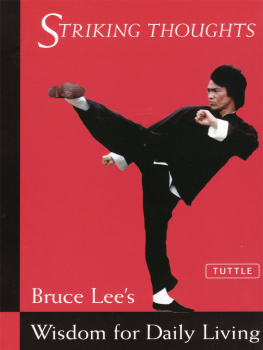
Bruce Dern
Bruce Dern
A Memoir
BRUCE DERN
with Christopher Fryer and Robert Crane

Due to variations in the technical specifications of different electronic reading devices, some elements of this ebook may not appear as they do in the print edition. Readers are encouraged to experiment with user settings for optimum results.
Copyright 2007 by Bruce Dern, Christopher Fryer, and Robert Crane.
All rights reserved.
Photo insert credits: Courtesy Columbia Pictures: page 5 top; Courtesy Bruce Dern: pages 1, 2, 3 top, 5 bottom; Courtesy MGM: pages 3 bottom, 7 bottom; Courtesy Sony Pictures: page 8; Courtesy 20th Century-Fox Film Corp: page 7 top; Courtesy United Artists/MGM: page 6 bottom; Courtesy Universal Studios: pages 4 bottom, 6 top; Courtesy Warner Brothers: page 4 top
Paperback edition 2014 by The University Press of Kentucky
scholarly publisher for the Commonwealth,
serving Bellarmine University, Berea College, Centre
College of Kentucky, Eastern Kentucky University,
The Filson Historical Society, Georgetown College,
Kentucky Historical Society, Kentucky State University,
Morehead State University, Murray State University,
Northern Kentucky University, Transylvania University,
University of Kentucky, University of Louisville,
and Western Kentucky University.
All rights reserved.
Editorial and Sales Offices: The University Press of Kentucky 663 South Limestone Street, Lexington, Kentucky 40508-4008 www.kentuckypress.com
The Library of Congress has cataloged the hardcover edition as follows:
Dern, Bruce.
Things Ive Said, but Probably Shouldnt Have: An Unrepentant Memoir / Bruce Dern with Christopher Fryer and Robert Crane.
p. cm.
Includes index.
ISBN 978-0-470-10637-2 (cloth)
1. Dern, Bruce. 2. Motion picture actors and actressesUnited StatesBiography. I. Fryer, Christopher. II. Crane, Robert David. III. Title.
PN2287.D44A3 2007
791.43028092dc22
[B]
ISBN: 978-0-8131-4712-3 (pbk. : alk. paper)
ISBN 978-0-8131-4714-7 (pdf)
ISBN 978-0-8131-4713-0 (epub)
This book is printed on acid-free paper meeting the requirement of the American National Standard for Permanence in Paper for Printed Library Materials.

Manufactured in the United States of America.

| Member of the Association of American University Presses |
After the journey of all the remembrances in this book, I could only dedicate it to the person by my side for well over half the trip. My dearest Andrea, without whose honesty, integrity, style, class, beauty and humor, to go with tremendous all around game, I simply would not
have endured the journeyIn a word, the woman is quite simply the Best.
To my daughter, Laura, who has been not only a constant thrill to be the parent and friend of, but her belief and encouragement in me, to always take risks and push the envelope as an actor, has made me absolutely excited to go to work every day with the chance that: We just might do something nobody has ever done before!
Introduction
S ometime in 2004, Bruce Dern received a script for a film titled Nebraska, which was to be directed by Alexander Payne. At the time, Payne had only three credits, Citizen Ruth, Election, and About Schmidt, the first starring Bruces daughter, Laura, and the last, his pal Jack Nicholson. Both actors stoked Bruces interest by proclaiming that there wasnt an actor alive who wouldnt want to work with Payne. Nebraska centers on Woody Grant, a taciturn, alcoholic old coot who thinks hes won a million bucks in a sweepstakes and is determined to walk from his Billings, Montana, home to Lincoln, Nebraska, in order to claim his prize and buy a new truck. After reading the script, Dern went to Toys R Us, bought a little red truck, and sent it to Paynes house. Even though the real-life Bruce Dern is a loquacious teetotaler, he included an accompanying note reading, You may not see it, but I am Woody. Before long, Payne went into production on Sideways. Oh, well.
Coincidentally, it was also in 2004 that we approached Bruce about doing this book, and as you read it, you will discover that Bruce Dern is no shrinking violet when it comes to his own skills as an actor. After all, he trained at the Actors Studio and has worked for and with the best Hollywood talents over the last fifty-five years. What is not readily apparent, however, is that when the world at large, or at least the film world, recognizes Derns unique talents, it conjures a sense of disbelief and a strong skepticism from the man himself. Such was the case when we met with Bruce at the Huntington Hotel in Pasadena, California, to discuss why he should tell his stories. As Bruce ambled down the hallway that late November morning, he was suddenly waylaid by a group of men and invited into one of the Huntingtons conference rooms. It turned out that it was a meeting of JPL (Jet Propulsion Lab) engineers, and they immediately recognized Bruce as Freeman Lowell, the eco-warrior astronaut from 1972s Silent Running. The group told him that his character has lived on as a hero to every rocket scientist alive. After a few minutes of exchanging pleasantries with the space geeks, Bruce made his way to the dark-paneled bar, where we would ultimately spend eighty-eight hours talking about his life and career. But first, we had to convince him that doing this book was a worthwhile adventure.
Why would anyone want to read a book about me? he asked sincerely.
After what just happened, do we really have to answer that? we asked, continuing, If nothing else, Bruce, that demonstrates what we believe: that youre an icon. We told him that the characters hed created have become touchstones for several generations of filmgoers, from the bikers like J.J. in Rebel Rousers to the Guide in The Trip, from James in They Shoot Horses, Dont They? to Big Bob in Smile, from Bobby Lee in Middle Age Crazy to wacky Lt. Rumsfield in The Burbs. Not to mention Thorg from Land of the Giants.
He was listening. We kept going.
Look, who else can claim to have worked with Kazan, Hitchcock, and Corman, for chrissakes? Most of your films, whether good, great, or something else, left an indelible imprint on the filmgoer chiefly because of your performance, and no one has the range of experience and ability to tell a story like you do.
He was wavering. We doubled down with sentiment.
We reminded Brucethough reminding him of anything is a fools errand since the man has a memory for conversation, story, and unrelentingly obscure athletic facts and records that puts an almanac to shamethat we first met a thirty-six-year-old Bruce Dern in 1972 at the offices of BBS Productions in Hollywood. BBS was the cinematic crucible in which Easy Rider, Five Easy Pieces, The Last Picture Show, and The King of Marvin Gardens were all forged. It was after that last film was in the can that we interviewed Bruce for a book we were writing about his friend, colleague, and Marvin Gardens costar, Jack Nicholson. Bruce agreed to the interview provided it was on the square with Jack. We assured him that his friend not only knew about but approved of the project and that he had also already subjected himself to our insatiable curiosity for several afternoons in his living room.
Next page









